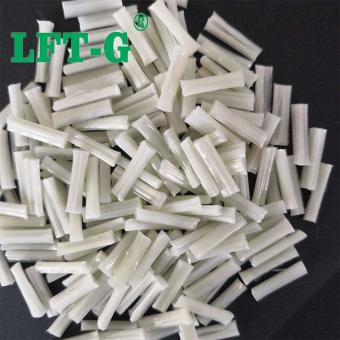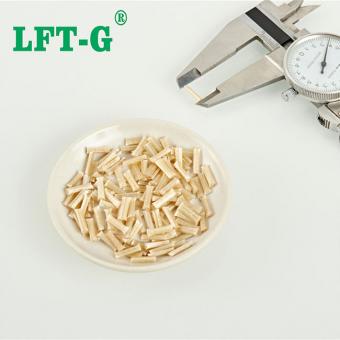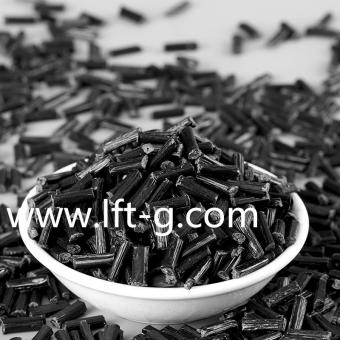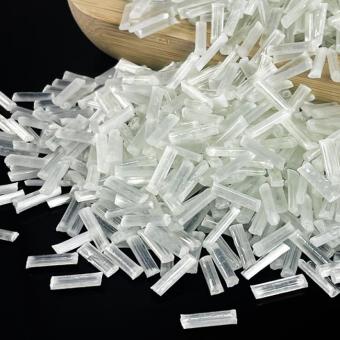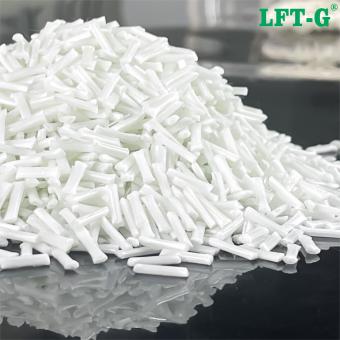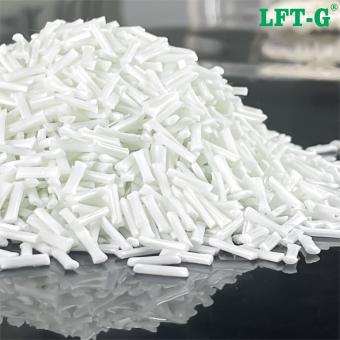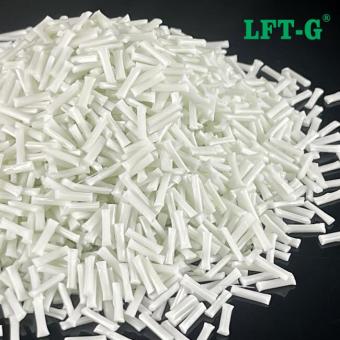-
LFT PA6 industrial use Long Glass Fiber compond plastic for automotive partsProduct grade: General grade, Toughen resistant grade Fiber specification: 20%-60% Product feature: High toughness, Low warpage, Light texture, etc Product application: Automotive, Electronic appliances, Sports equipment, Power tools, etc.view more
-
Xiamen LFT-G Polyamide 6 Long Glass Fiber Reinforced Thermoplastic for automotive partsProduct grade: General grade, Toughen resistant grade Fiber specification: 20%-60% Product feature: High toughness, Low warpage, Light texture, etc Product application: Automotive, Electronic appliances, Sports equipment, Power tools, etc.
- High performance nylon 6 LGF
- Good appearance LFT materials polyamide 6
- 2023 Hot sell GF made in China pa6 modified plastic
- Supplier price better mechanical properties
- Sample provide car parts long cut piece fiber
- Good price high-strength components materials PA6 injection compounds
Tags :
-
Xiamen LFT high temperature resistance Polyphenylene sulfide PPS filled long glass fiber polymerPolyphenylene sulfide PPS plastic (polyphenylene sulfide) is a special engineering plastic with excellent comprehensive performance, high strength, the sound of metal, and the material is as hard as metal. It also has the characteristics of high temperature resistance, cold resistance, acid and alkali resistance, wear resistance, flame retardant V0, low warping and excellent electrical properties. Compared with metal, PPS material products are light in weight, which is particularly important for mechanical equipment requiring self-weight reduction, such as vehicles, ships and aircraft. PPS material strength is high, compared with the weight of metal, PPS strength is much higher than the general metal, is the highest strength of existing structural materials. PPS material has good chemical stability, and has good corrosion resistance to general acids, alkalis and other chemicals. The electrical properties of PPS materials are very outstanding, in the high temperature, high humidity, high frequency environment, high volume resistivity and insulation resistance remain unchanged, is an excellent insulation material. PPS material has good wear resistance and can be used to manufacture a variety of self-lubricating bearings, gears and seals. PPS material molding processing is convenient, products can often be formed at one time, and metal products always have to go through several, more than a dozen, or even dozens of processes to complete the processing. Long glass fiber compounds "Center Fill" is LFT compounds that are obtained through our technology by charging glass fiber rovings composed of thousands of filaments into an impregnation process and impregnating the glass fibers uniformly with molten thermoplastic resin and then cutting the resultant product into pellets. Significantly improved impact resistance Increased stiffness and strength Good heat resistance Improved creep and wear characteristics Reduced the degree of warpage and deformation Reinforced properties of recycled crystalline and non-crystalline resins Details Name Fiber content Color Length MOQ TDS FOB Price Delivery polyphenylene sulfide filled long glass fiber polymer 20%-60% Natural color/Customized 6-25mm 25KG/Bag Contact us for TDS USD8.8-11.1/KG By ship or air Company profile Xiamen LFT Composite Plastic Co.,LTD was established in 2009, is a brand-name global suppliers of long fiber reinforced thermoplastic materials integrating product research & development(R&D), production and sale marketing. Our LFT products have passed the ISO9001&16949 system certification and have obtained lots of national trademarks and patents, covering the fields of automotive, military parts and firearms, aerospace, new energy, medical equipment, power wind energy, sports equipment, etc. Other materials you may interested PA66-NA-LGF PPA-NA-LCF PA12-NA-LGF
- Exceptional mechanical strength Polyphenylene sulfide plastic
- LFT PPS long glass fiber reinforced thermoplastic resin pellets
- PPS plastic granules high strength made in China
- PPS can be customized long cut fiber filament
- hot sell light weight plastic instead metal and steel
- engineering used plastic PPS good appearance gfrp
Tags :
-
Xiamen PLA Polylactic Acid green materials can be recycled long carbon fiber reinforcedPLA (polylactic acid) is a semi-crystalline thermoplastic polyester. It is derived from renewable resources and is therefore classified as a bioplastic. PLA is usually made from plant starch. This origin eventually resulted in the two key monomers used in PLA synthesis - lactic acid and lactide. Each monomer can be used to produce PLA by a number of different processes. Low molecular weight PLA was first produced in 1932. In 1952, DuPont further developed the process and created the high molecular weight PLA. PLA is easy to print. It is biodegradable and therefore more environmentally friendly than ABS. The production of PLA also requires much less energy. Long Carbon Fiber Reinforced Thermoplastic LFT® is A LGF or LCF compound , through Centerfill manufacturing method which Offers exceptional Properties for weight and Cost reduction. With pellet length of 7-25mm and a range of 20%-70% of LGFor LCF content , LFT® Products family consist of Tailor made solutions to the Industry’s vast requirements , such as: · LFT® - Fulfills heat stability requirements. · LFT® - Offer Climate resistant Properties including UV resistance. · LFT® - Ultra Performance & safety , with exceptional impact resistance Features, especially at low temperatures. · LFT® - Cost Effective P.s. Centerfill manufacturing method:Centerfill uses our proprietary technology to introduce glass roving (GFR), which consists of several thousand filaments, into an impregnating device and melt the thermoplastic resin, uniformly impregnating between the filaments and then cutting them into pellets. Manufacture. How Does Composite Differ From Plastics? Plastic components are generally made from a single polymer injection, or sometimes a two-stage process that overmolds rubber onto a part for specific applications such as grip and seal. They are relatively easy to manufacture, generally involving a single-stage operation. Composites, on the other hand, are always two or more co-processed materials, achieving better properties than the individual components can deliver. They are also intrinsically more complex to manufacture. They generally require manual lay-up processes and tend to be much more expensive in labor terms than simple, automatable molding operation outputs. Composites are generally intrinsically stronger than equivalent plastic parts by a large factor. This allows composite parts to deliver higher strength and reduced weight, compared with a similar plastic component. Plastic parts are, in most regards, shape, and size unlimited. Composite parts are rarely used for very small components but can be very large, but they are quite restricted in the complexity of shapes and fine detail. Broadly, plastics are used for low-cost, high-volume applications, whereas composites are considerably more costly and are used for high-value and lower-volume tasks. Xiamen LFT Composite Plastic Co., Ltd. Xiamen LFT composite plastic Co., Ltd. was founded in 2009 by veterans of the thermoplastic-reinforced composite industry and is one of the global suppliers of long fiber reinforced thermoplastic materials, integrating research, production, and marketing of our own brand. Our products have passed the ISO9001&16949 system certification and have been awarded several national trademarks and patents. Our products can be used in the manufacture of home appliances, aerospace, automotive, military, electrical, and other components, as well as medical equipment, sporting goods, daily necessities, and other fields. The company has been adhering to the management belief of quality first, laying a solid foundation at home and abroad, and has been unanimously recognized by customers at home and abroad.
- PLA natural color virgin plastic
- quick and easy prototypes GFRP
- renewable sources
- 3d print plastic good appearance
- long fiber filled modified plastic
- China manufacturer made
Tags :
-
LFT High Tensile Strength TPU Thermoplastic Urethane long glass fiber reinforced compoundsWhat is TPU Plastic? Thermoplastic Polyurethane (TPU) Thermoplastic Polyurethane is soft and elastic, with excellent tensile and tear strength. For this reason, it is often used to make parts that demand a rubber-like elasticity. TPU is a little bit expensive than other resins, but there is no substitute for many applications, such as protective wire and cable sheaths. Another advantage is that TPU improves the grip for products that need to be held securely in hand. What Are the Advantages of Thermoplastic? Thermoplastics are popular manufacturing materials. Some of the reasons for this are listed below: 1)Ease of Processing: High production efficiency, can be used for complex product design 2)Low Cost: Thermoplastics — especially commodity thermoplastics like polypropylene — cost very little per kilogram. The resulting products are thus very affordable, particularly when coupled with high-volume production technologies like injection molding. 3)Wide range of properties: Thermoplastics have a wide range of mechanical, thermal, and electrical properties. Specific properties depend on the type of thermoplastic, processing technique, and the types of fillers and additives used. 4)High strength-to-weight ratio: Thermoplastics are lightweight. As such, components can be designed to take advantage of this while keeping the loads within acceptable limits. What is the usage of TPU Long Glass Fiber Reinforced Pellets? Some of the TPU products manufactured are automotive instrument panels, caster wheels, sporting goods, power tools, drive belts, medical devices, footwear and etc. You can also contact us for more technical instruction. Product Details Color Length Package Sample MOQ Fiber Content Natural color or Customized 6-25 mm 25kg/bag Available 25kg 20%-60% About LFT Plastic LFT long fiber reinforced thermoplastic engineering materials,compared to ordinary short fiber reinforced thermoplastic materials (fiber length is less than 1-2 mm), the LFT process produces thermoplastic engineering material's fibers in lengths of 5-25 mm. The long fibers are impregnated with the resin through a special mold system to obtain long strips that are fully impregnated with the resin ,and then cut to the length as required. The most used base resin is PP, by PA6, PA66, PPA,PA12,MXD6,PBT, PET,TPU,PPS, LCP,PEEK, etc. Conventional fibers include glass fiber, carbon fiber,special fibers include basalt fiber and quartz fiber, etc. Depending on the end use, the finished products can be used for injection molding,extrusion, molding, etc., or directly used for plastic instead of steel and thermoset products. Q & A Q: What is the Molding Temperature for Thermoplastic Polyurethane (TPU)? A: depending on the TPU being molded. Q. How to choose the reinforcement method and length of the material when using long fiber reinforced thermoplastic material? A: The selection of materials depend on the requirements of the products. It is necessary to assess how much the content is enhanced and how much length is more appropriate, which are depending on the performance requirements of the products. Q. When a customer want to develop a new product, How to recommend customers suitable material and characteristics? A: It is necessary to understand the customer's technical requirements ,use environment, test conditions for the new product, and recommend the model according to various kind of long-fiber resin substrate characteristics.
- China manufacturer plastic raw materials
- Ease of Processing low cost
- LFT GFRP 30 Instead metal lightweight
- Injection molding materials polymers
- shoes mid sole sports parts home appliance
- good appearance continuous fiber glass
Tags :
-
Xiamen LFT Nylon Polyamide 6 excellent heat resistant properties Long glass fiber Filled PelletsWhat is Polyamide? Polyamide (PA) Polyamide, which is also known by the trade name, Nylon, has excellent heat resistant properties, especially when combined with additives and filler materials. In addition to this, Nylon is very resistant to abrasion. Xiamen LFT offers a wide range of temperature-resistant nylons with many different filler materials. If you are not sure which PA material is suitable for you, please tell us your needs and our team will provide you with technical support free of charge. What is Polyamide 6? Nylon 6 or PA 6 Has a semi-crystalline structure and is used for nonwoven fabrics Ductility and Abrasion resistance What Are the Advantages of Nylon 6? The main advantages of nylon 6 are its stiffness and resistance to abrasion. Moreover, this material has excellent impact strength, wear resistance, and electrical insulating properties. Nylon 6 is a highly elastic and fatigue-resistant material, meaning it will return to its original proportions after being distorted by tension. This polyamide is non-toxic and can be combined with glass or carbon fibers to increase performance. The absorption capacity of the material grows in direct proportion to the quantity of moisture it absorbs. The high affinity of nylon 6 for some dyestuffs allows for more dyeing diversity, with the potential for brighter, deeper patterns. Can Nylon 6 Be Used in Plastic Injection Molding? Yes, Nylon 6 is a suitable material for injection molding. The resulting molded nylon parts possess great strength, as well as chemical and temperature resistance. When molding nylon 6, the material is sometimes injected with a specified amount of glass fibers (usually between 20% and 60%) to boost its tensile strength. Glass fibers improve stiffness. Moreover, since UV radiation can be harmful to nylon, a UV stabilizer is frequently added to the material before injection molding to decrease the possible degradation of the item with time. Is Nylon 6 a Copolymer? No, nylon 6 is not a copolymer. The clue is in the name “nylon 6” in which the 6 represents the single repeating monomer which has 6 carbon atoms. Nylon 6 is made through the polymerization of a monomer named caprolactam. Nylon 6 is not to be confused with nylon 6,6 which is made of two repeating monomers hexamethylenediamine and adipic acid; this makes it a copolymer. Two other nylons are also copolymers; they are nylon 6,12 and nylon 4,6. Why filling Long Glass Fiber into Polyamide 6? Long glass fiber reinforced composites can solve your problems when other methods of reinforced plastics do not provide the performance you need or if you want to replace metal with plastic. Long glass fiber reinforced composites can cost-effectively reduce the cost of goods and effectively improve the mechanical properties of engineering polymer .Long fibers can be uniformly distributed inside the product to form a network skeleton, thus improving the mechanical properties of the material product. LFT is the product name for a family of long fiber reinforced thermoplastic materials for Injection Molding, Compression Molding and Extrusion applications. These materials differ from standard thermoplastic compounds in the length of the fiberglass in the pellets. Retention of fiber length in the finished part is key to the performance of LFT. The fiberglass is continuous within the pellet and offers incredible properties and performance when molded correctly. What is the application of PA6-LGF? Other PA Plastic you may interested: PA66-LGF PA12-LGF About Xiamen LFT
- LFT Long fibre glass reinforced thermoplastic resin
- Polyamide 6 PA plastic
- High strength for car parts auto
- raw materials made in China good price
- high-performing polymer
- washing machine drum parts good appearance
Tags :
-
Xiamen LFT Nylon Polyamide 6 excellent heat resistant properties Long glass fiber Filled PelletsWhat is Polyamide? Polyamide (PA) Polyamide, which is also known by the trade name, Nylon, has excellent heat resistant properties, especially when combined with additives and filler materials. In addition to this, Nylon is very resistant to abrasion. Xiamen LFT offers a wide range of temperature-resistant nylons with many different filler materials. If you are not sure which PA material is suitable for you, please tell us your needs and our team will provide you with technical support free of charge. What is Polyamide 6? Nylon 6 or PA 6 Has a semi-crystalline structure and is used for nonwoven fabrics Ductility and Abrasion resistance What Are the Advantages of Nylon 6? The main advantages of nylon 6 are its stiffness and resistance to abrasion. Moreover, this material has excellent impact strength, wear resistance, and electrical insulating properties. Nylon 6 is a highly elastic and fatigue-resistant material, meaning it will return to its original proportions after being distorted by tension. This polyamide is non-toxic and can be combined with glass or carbon fibers to increase performance. The absorption capacity of the material grows in direct proportion to the quantity of moisture it absorbs. The high affinity of nylon 6 for some dyestuffs allows for more dyeing diversity, with the potential for brighter, deeper patterns. Can Nylon 6 Be Used in Plastic Injection Molding? Yes, Nylon 6 is a suitable material for injection molding. The resulting molded nylon parts possess great strength, as well as chemical and temperature resistance. When molding nylon 6, the material is sometimes injected with a specified amount of glass fibers (usually between 20% and 60%) to boost its tensile strength. Glass fibers improve stiffness. Moreover, since UV radiation can be harmful to nylon, a UV stabilizer is frequently added to the material before injection molding to decrease the possible degradation of the item with time. Is Nylon 6 a Copolymer? No, nylon 6 is not a copolymer. The clue is in the name “nylon 6” in which the 6 represents the single repeating monomer which has 6 carbon atoms. Nylon 6 is made through the polymerization of a monomer named caprolactam. Nylon 6 is not to be confused with nylon 6,6 which is made of two repeating monomers hexamethylenediamine and adipic acid; this makes it a copolymer. Two other nylons are also copolymers; they are nylon 6,12 and nylon 4,6. Why filling Long Glass Fiber into Polyamide 6? Long glass fiber reinforced composites can solve your problems when other methods of reinforced plastics do not provide the performance you need or if you want to replace metal with plastic. Long glass fiber reinforced composites can cost-effectively reduce the cost of goods and effectively improve the mechanical properties of engineering polymer .Long fibers can be uniformly distributed inside the product to form a network skeleton, thus improving the mechanical properties of the material product. LFT is the product name for a family of long fiber reinforced thermoplastic materials for Injection Molding, Compression Molding and Extrusion applications. These materials differ from standard thermoplastic compounds in the length of the fiberglass in the pellets. Retention of fiber length in the finished part is key to the performance of LFT. The fiberglass is continuous within the pellet and offers incredible properties and performance when molded correctly. What is the application of PA6-LGF? Other PA Plastic you may interested: PA66-LGF PA12-LGF About Xiamen LFTview more
-
Xiamen LFT Nylon Polyamide 6 excellent heat resistant properties Long glass fiber Filled PelletsPolyamides are high-performing polymers that have great strength and wear resistance when compared to other polymers.view more
-
Xiamen LFT Nylon Polyamide 6 excellent heat resistant properties Long glass fiber Filled PelletsPolyamides are high-performing polymers that have great strength and wear resistance when compared to other polymers.view more

 e-mail
e-mail English
English français
français Deutsch
Deutsch русский
русский italiano
italiano español
español português
português العربية
العربية 日本語
日本語 한국의
한국의 中文
中文












